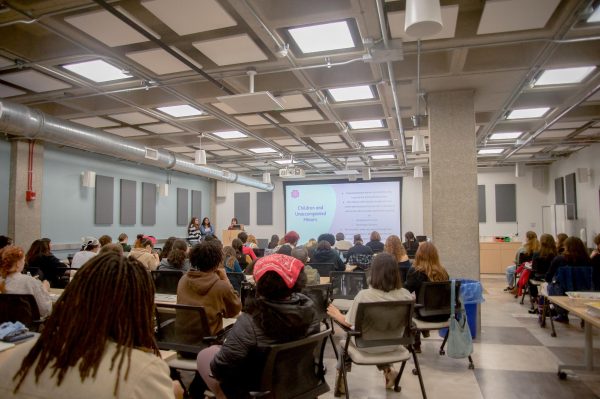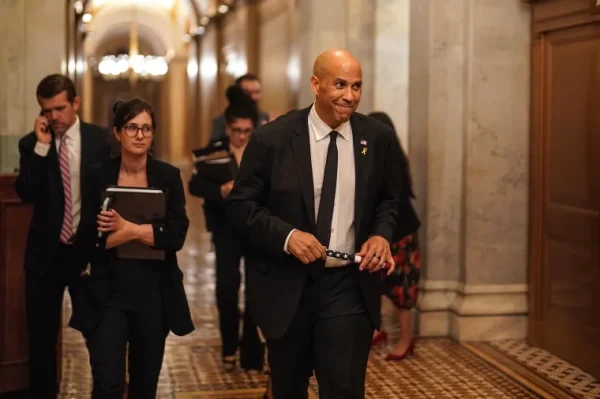Current Gun Control Debates Give Inadequate, Ineffective Solutions
This op-ed is both a response to Jacob Britton’s letter disputing the constitutionality of a federal ban on AR-15s and similar weapons (“Founding Fathers Would Approve of AR-15 Sales,” The Oberlin Review, March 2, 2018), and an expansion of my own views. Throughout his letter, Mr. Britton misrepresents not only constitutional law but also the history of firearms. As someone with comparatively extensive knowledge of guns and gun control, I feel it’s my responsibility to, foremost, correct the record with regards to Mr. Britton’s letter, but also to present my take on the current gun regulation debate.
Mr. Britton first assumes that the Supreme Court’s review of amendments is restricted to interpreting the intent of the Framers, which is incorrect. The Supreme Court has never held that the Second Amendment, or any constitutional amendment, is beyond caveat or exception. A deprivation of constitutional rights relies on the demonstration of a “compelling state interest” and being narrowly tailored to address that interest. The Supreme Court has repeatedly maintained the constitutionality of gun control statutes such as the National Firearms Act of 1934, which bans machine guns and tightly controls short-barreled rifles and shotguns. It surely can be argued that an AR-15 ban is sufficiently narrowly tailored to a sufficiently compelling state interest.
The constitutionality of a hypothetical AR-15 ban established, I’d like to address some of Mr. Britton’s amusing historical inaccuracies. In brief, there was no weapon in existence during the American Revolution or shortly after that compares to modern sporting rifles such as the AR-15 in form or function. The Belton flintlock that Mr. Britton mentions is a glorified shotgun, with musketballs stacked in the barrel and fired all at once like a Roman Candle, and is reloaded manually like all other 18th-century muskets. With an average musket taking around 20 seconds to reload a single shot and ball, I can only imagine how long it would take to load 20 times that. Furthermore, the Belton flintlock and all other weapons commonly cited by many Second Amendment advocates as examples of early “assault weapons” are either constitutionally banned under the aforementioned National Firearms Act — such as the Gatling Gun and Puckle Gun — or were so unpopular that to compare them to the AR-15, the most popular rifle in America, is frankly insulting, and makes it unclear if Mr. Britton has any idea what he is talking about.
It is both predictable and disappointing that Mr. Britton’s recommendation for reducing school shootings is to increase police presence in schools. Without addressing the moral and ethical issues of patrolling schools with our increasingly militarized police force, such a recommendation is remarkably bad policy. When police officers assigned to the Marjory Stoneman Douglas High School did not intervene in the shooting, all of America saw something members of minority communities have seen for decades: Police officers are just as capable of doing terrible things as anyone else.
With Mr. Britton’s cacata carta addressed, I would like nothing more than to end this on a positive note, but that would be disingenuous. As much as I hope there is a solution to our gun violence problem so straightforward, an assault weapons ban is not that solution. It won’t immediately affect the gun violence rate in a statistically significant way and would reduce gun violence by, at the very most, a few percentage points over the course of decades. We know this because of how few gun homicides are with any kind of rifle — around three percent according to FBI data from 2016. Additionally, we have as historical examples the 1994 Assault Weapons Ban, which did not have a clear statistically significant effect on the gun violence rates, or even the assault weapon violence rates. We also have the Australian gun ban. Since 1996, there has definitely been a reduction in violent crime and gun crime in Australia, but very gradual, very slight, and not at all clearly a result of the ban as violent crime and gun homicide rates drop year after year around the world. We can’t afford to wait decades for a three to fivee percent reduction in gun deaths. That’s simply not enough and not fast enough.
More than half of all gun deaths in the United States are suicides, and the vast majority of the remainder are connected to gang violence and domestic violence. Gun regulations and reforms are effective as barriers to suicide, but beyond that, we need to address mental healthcare accessibility and the stigmatization of mental health problems, as well as improving our early recognition and intervention programs. We need to address the economic and social circumstances that drive gang violence in this country. We need to address the flaws in our judicial system that allow abusers the opportunity and ability to harm their partners. Across the board, we need to double-down our enforcement of laws and systems of intervention already in place, systems which would have prevented the violence in Florida if not for negligence by the authorities. None of these tasks are easy, and none are quick, but they are all tasks we as a nation should be working on, even if they weren’t tightly connected to gun violence.
No realistic proposal made so far by pro- or anti-gun camps would significantly affect America’s gun violence epidemic. There is, as far as I can understand, no simple fix for this complicated issue, but until both camps work harder to understand the nuance of this problem, we will remain in our never-ending cycle of tragedy, anger, and gridlock. We won’t see progress on gun violence until we can move past the red herring of assault weapons and AR-15s and demand that our government address the real sources of gun deaths.



